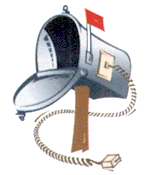|
9/17/04
 TIRE
LETTER #1 TIRE
LETTER #1
Such a great article about the fuel tire issue.
Forrest Lucas is right: quit now and don't
start again until this issue is resolved! Just
take a look at what happened with the space
shuttle. The problem wasknown and
rationalized away.
Thanks for the article. Keep up the
great work!
Dean Cassano
Lakeland, FL
TIRE LETTER #2
I spent 30 years of my life in the tire business.....much
of it as a member of a group of volunteers
that worked with the full time people in the
racing division supplying technical support
to teams. We spent a lot of time, effort, and
expense to develop a nitro tire, only to have
NHRA protect Goodyear by adopting, at Goodyear's
urging, rules that took us out of the game
by requiring a front tire be the same brand
as the drive tires. We had not put any effort
into a front and did not have one capable of
safely running the speeds at that time. Frankly,
the fronts just hold up the hot rod....it's
the drives that win races, eh?!
Goodyear is correct in their statement that
they don't make any money on their tires at
the tracks. The funding and budgets normally
come from the Advertising departments in these
companies, not the R&D functions. The technology
gained from racing is utilized to make better
tires for the street. I'm sure all tire companies
including Hoosier have equipment that will
load and spin the tires at the speeds we're
running today, however the heat history generated
by the burnout and downtrack spinning would
be very difficult to replicate.
The comment about shorting the cure cycle
is outrageous. No tire engineer would stand
for that, nor would the quality people let
a tire out of the plant should that take place.
The quality standards on a racing tire are
tremendous, to the point that any performance
defect results in an immediate destruction
of that unit. Minor appearance flaws might
make it out....(but) never a performance abnormality.
Frankly, I'm amazed that Goodyear, or any other
manufacturer, can produce a tire that large
that lives at 300+ mph. The ones I had some
direct experience with were growing in circumference
approximately 6" at 250 mph. Those tires
are in fact another gear. Belted radial tires
don't exhibit this growth, something that might
warrant consideration, but there goes the speed
and here comes the cost.
I understand Mr. and Mrs. Lucas' concern and
share the pain of the Russell family, but Goodyear
shouldn't bear the full extent of this problem.
In my opinion, the fans would see better and
more teams competing if something was done
to bring them back to 275-300 mph. Taking
fuel percentage out makes them add static compression
and blower overdrive....back to 320+. Taking
out wing angle and raising tire pressure makes
them redistribute the weight on the cars, motor
placement, drive angles, driver location, etc.
The only issue that makes sense it to reduce
the overall wing size and height, and limit
the blower overdrive...both items readily available
for monitoring.
Of course, all this is personal opinion and
certainly doesn't come from any engineering
school or direct experience with current products. It's
just some thoughts by a person that's been
in the sport since 1955 at a bunch of levels.
I'm sure there's people working on all this
from a bunch of different angles and companies.
It'll get fixed.......
Ron Evans
TIRE LETTER #3
I want to congratulate you guy's on a great
article. The comment I want to make is this,
I think Goodyear tire and rubber Co. is doing
everything possible to fix this tire problem.
I'm no engineer but, I would really like to
know if it's the speed causing this or the
load at the launch that is the culprit. I have
watched a lot of races and watched the tires
on a lot of cars, both dragsters and funny
cars. What I see is at the launch the
tires are flat across the what would be the
tread area of the tire and you can see that
the tire is even looking wider at that stage
of the race and after the car is down track
the tires grow so that the car is riding on
the center of the tire. The chunking that I
have looked at seems to be at the edges of
the tires and not the centers.
I don't know what the answer is but, maybe
they can get ESPN to super slow-mo the tires
through out the run and get a better picture
of what's going on here. I guess the question
is how much quicker is the 60-ft times now
compared to past 60-ft times. This is just
one mans
observations. I still think that the fuel
classes are run what you brung and hope you
brung enough. I just hope that Goodyear and
the NHRA get this fixed for the good of the
sport and the safety of the drivers or vice
versa. Thank you for the forum to voice my
opinion.
Jim

|